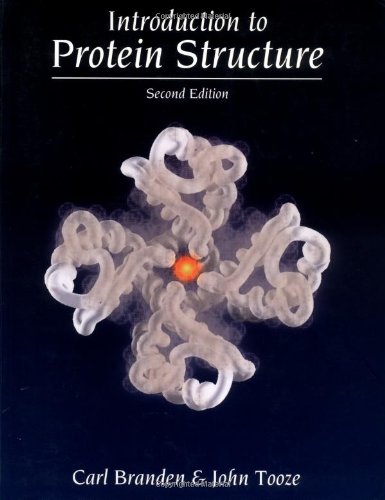Introduction to Protein Structure pdf free
Par frank gary le vendredi, avril 28 2017, 22:11 - Lien permanent
Introduction to Protein Structure. Carl Branden, John Tooze

Introduction.to.Protein.Structure.pdf
ISBN: 0815323050,9780815323051 | 415 pages | 11 Mb

Introduction to Protein Structure Carl Branden, John Tooze
Publisher: Taylor & Francis
Introduction to Protein Structure provides an account of the principles of protein structure, with examples of key proteins in their biological context generously illustrated in full-color to illuminate the structural principles described in the text. According to the neutral theory of evolution, the functionality of protein with disadvantageous amino acid substitution can be restored by another amino acid substitution which compensates the first one to sustain the fitness [1]. The protein structure-function paradigm has been believed as a dogma in the 20th century. Researchers at Peking University's Beijing Nuclear Magnetic Resonance Center (BNMRC) can determine 3D protein structures 1000 times faster, thanks to the grid. Introduction; Molecular Recognition Processes; Nucleic Acids; Protein Structure; Proteins as Catalysts; References. What are What are some examples of the structural function of organic molecules? Doi:10.1371/journal.pone.0051773. Due to six genotypes and their variability, HCV vaccine development has always been a challenge and for this, structural and non- structural proteins are being targeted to develop an effective vaccine. Introduction to Protein Structure. Simulating the Physical World" by Berendsen "Understanding Molecular Simulations" by Frenkel. Lecture 4 – Introduction to Protein Structure (1)IntroductionProteins are the functional forms of polypeptides. These are glycoproteins found on all nucleated cells. Molecular modelling - Wikipedia, the free encyclopedia The types of biological activity that have been investigated using molecular modelling include protein folding, enzyme catalysis,. MHC class I Structure and Function. Biochemistry Introduction Review - Image Diversity: amino acid molecule protein molecule carbohydrate molecule lipid molecule nucleic acid molecule. The (interdependent) structural and evolutionary definitions of protein domains given above have been used to produce systematic hierarchical taxonomies of domains that combine information about shapes, functions and sequences [10,11]. (2012) Introduction of Caveolae Structural Proteins into the Protozoan Toxoplasma Results in the Formation of Heterologous Caveolae but Not Caveolar Endocytosis. These proteins are coded by three genes HLA-A, HLA-B and HLA-C present on the short arm of chromosome 6. Something more general in the light of protein structure: "Introduction to Protein Structure" by Branden and Tooze. Macromolecules: Structure, Shape, and Information.